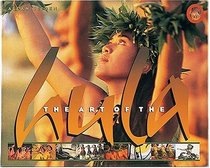Search -
The Art of Hula
The Art of Hula
Author:
Well-respected Hawai'i Author Allan Seiden expertly chronicles the history, traditions and beauty of the ancient art of hula. Rare historical images and vibrant full-color photography accompany the informative text. The Hawaiian worldview was given tangible form in the hula. More than just a dance, hula combines aesthetic choreography and epic ... more »
Author:
Well-respected Hawai'i Author Allan Seiden expertly chronicles the history, traditions and beauty of the ancient art of hula. Rare historical images and vibrant full-color photography accompany the informative text. The Hawaiian worldview was given tangible form in the hula. More than just a dance, hula combines aesthetic choreography and epic ... more »
ISBN-13: 9780896103856
ISBN-10: 0896103854
Publication Date: 11/1999
Pages: 120
Rating: ?
ISBN-10: 0896103854
Publication Date: 11/1999
Pages: 120
Rating: ?
0 stars, based on 0 rating
Publisher: Island Heritage Publishing
Book Type: Hardcover
Members Wishing: 1
Reviews: Amazon | Write a Review
Book Type: Hardcover
Members Wishing: 1
Reviews: Amazon | Write a Review




